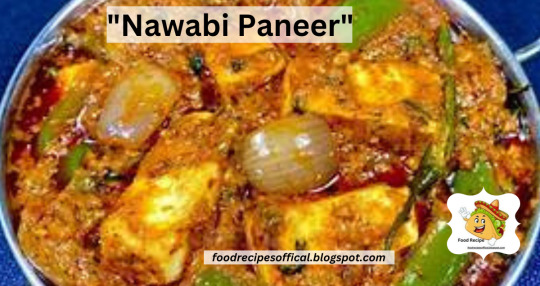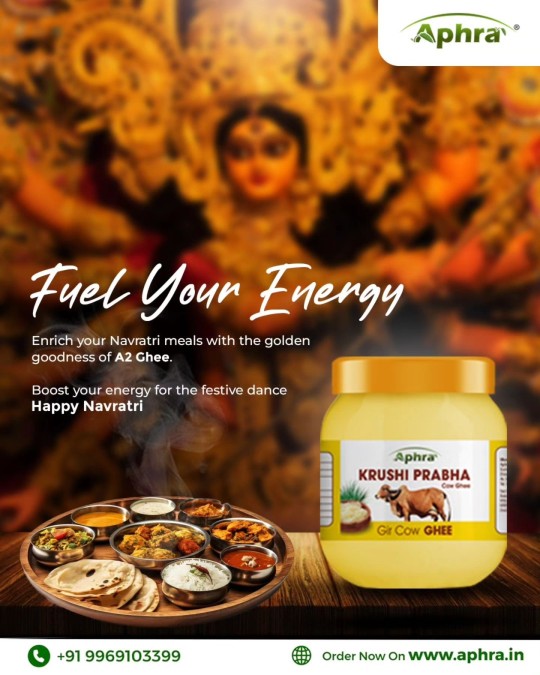#traditional ghee
Explore tagged Tumblr posts
Text
Buy Aphra A2 Cow Ghee – Pure Health & Nutrition by Aphra
Aphra A2 Cow Ghee is made using traditional methods to preserve its rich flavor and health benefits. It helps maintain a healthy gut, improves digestion, boosts immunity, and provides instant energy. Packed with antioxidants and essential vitamins, it’s pure health in every spoon. Order at www.aphra.in

#A2 Cow Ghee#Aphra A2 Ghee#pure cow ghee#health benefits of ghee#traditional ghee#desi cow ghee#buy A2 ghee online#Aphra ghee benefits
0 notes
Text
Decided to stay up late to bake instead of going to bed at a reasonable time for work in the morning
I’m sure this will have no repercussions that will affect my general well-being throughout the course of my day tomorrow :)
#my thoughts#by the way it’s a brown butter chocolate chip cookie dough and brioche dough#but I realized halfway that I only had half the butter for the recipe :/#I subbed ghee and coconut oil for the rest???#very non traditional fats in a bread that relies so heavily on flavoring from butter so hopefully that’ll go well enough#I’m sure I will at least have bread if not brioche#cons of baking past midnight: you can’t run to the store for a missing ingredient
11 notes
·
View notes
Text
Banaras chura matar recipe | chura matar recipe
Banarasi chura matar recipe | chura matar recipe | banarasi Poha recipe with detailed photo and video recipe. a traditional and authentic Uttar Pradesh delicacy made with flattened rice and green peas. it is also popularly known as banarasi chura matar or Banarasi poha and is typically served as street food. This green peas poha can also be served as a morning breakfast recipe similar to the…
#Authentic Banarasi Chura Matar Recipe Step by Step#Banarasi Chura Matar#Banarasi Chura Matar Recipe#Best Poha Recipe with Green Peas and Spices#Chura Matar Banaras Style#Chura Matar Recipe#Easy Poha Recipe#Flattened Rice Recipe#Ghee Poha#Ghee poha recipe#green peas recipe#Healthy Snack#How to Make Banarasi Chura Matar at Home#How to Make Chura Matar#Indian Breakfast#Low-Calorie Meal#no onion no garlic#no onion no garlic recipe#North Indian breakfast#North Indian Cuisine#North Indian Street Food Recipe#Poha Recipe#Poha with Green Peas#Poha with Peas#Quick & Easy Breakfast#Quick & Easy Chura Matar Recipe for Breakfast#Street Food Recipe#Street-Style Chura Matar Recipe from Banaras#Traditional Banarasi Poha#Traditional poha dish
0 notes
Text
Easy authentic Palak Paneer recipe
#authentic Palak Paneer#creamy curry recipes#creamy spinach curry#delicious vegetarian curry#easy Palak Paneer#flavorful spinach dishes#ghee in Palak Paneer#healthy Indian dishes#healthy Palak Paneer#healthy vegetarian recipes#homemade curry#homemade Palak Paneer#indian curry#Indian food#Indian spinach curry#palak paneer#Palak Paneer recipe#paneer curry#paneer curry with spinach#paneer recipes#quick vegetarian dinner#simple Palak Paneer#spinach paneer curry#traditional Palak Paneer#vegetarian curry
0 notes
Text
Wheat Halwa
## **Wheat Halwa – First Dessert from My New Kitchen** Welcome to my new kitchen! Although we haven’t fully shifted yet, I couldn’t resist the urge to make a small dessert to mark the beginning of this new journey. With limited ingredients, a handful of utensils, and using whatever I could find in packages, I decided to prepare a simple yet delicious **Wheat Halwa**. This dish, made by…
#almond garnish dessert#beginner-friendly dessert#cane sugar dessert#Comfort food#easy halwa recipe#festival dessert#first dessert in new kitchen#ghee halwa#homemade dessert#Indian sweet recipe#quick halwa recipe#roasted wheat flour halwa#simple sweet dish#traditional halwa recipe#wheat halwa recipe
0 notes
Text
instagram
Nourish your family with the finest desi ghee, straight from our happy cows.
Limited time offer: Enjoy 10% off your first order of Paavi's nutritious a2 milk with free paneer or curd!
#desi milk products#paavi milk dairy farm#desi cow#gomata#paavi farm pune#schedule farm visit#nutritious ghee#healthy milk#traditional dairy#organic milk#Instagram
1 note
·
View note
Text
Green Agrow | Home Grocery | Online Purchase - Organic Toor Dal | Ph. 9566188518 | JB Enterprises Group, No.358, Avvai Shanmugam Salai, GJ Plaza, II Floor, Gopalapuram, Chennai-600086

Toor Dal, also called pigeon peas, are used to prepare the most common dishes in homes on a daily basis. This legume is very nutritive and rich in proteins. These pigeon peas may be sprouted briefly, then cooked, for a flavour different from green or dried peas.
#Green Agrow#Online Organic Grocery Shop#Chennai#Online Organic Grocery Store#Green Agrow Manufacturing Company#Gopalapuram#Green Agrow Organic Products#Organic Rices#Organic Ponni Boiled Rice#Organic Idly Rice#Cold Pressed Oil#Pressed Coconut Oil#Deepam Oil#Cold Pressed Premium Ground Nut Oil#Cold Pressed Premium Gingelly Oil#Wheat Flour#Organic Vendhayam#Cardamon#Cinnamon#Organic Chilli Powder#Clove#Organic Cumin#Organic Black Pepper#Organic Sun Dried Red Chilli#Traditional Sambar Powder#Traditional Rasam Powder#Tamarind Deseeded#Organic Turmeric Powder#Desi Cow Ghee#Desi A2 Cow Ghee Organic Channa Dal
0 notes
Text
Delicious Seviyan Kheer | Indian Pudding
Aromatic Indian dessert, Seviyan Kheer: celebration of culture and tradition.
There’s something magical about the aroma of spices and ghee wafting through the kitchen, hinting at the delicious dessert that’s about to grace your table. Yes, we’re talking about the classic Indian Seviyan Kheer, a delightful pudding made with thin vermicelli or seviyan. This dish is a staple in many Indian households, especially during festive occasions. It’s a simple yet satisfying dessert…

View On WordPress
#After-Dinner Treat#Cardamom#Coconut Milk#Cold Dessert#Dry Fruits#Festive Dessert#Fresh Cream#Ghee#Hot Dessert#Indian cuisine#Indian Dessert#Lunch Accompaniment#Milk#Puri Meal#Saffron#Seviyan Kheer#sugar#Sweet Dish#thepanvelite#Traditional Recipe#Vegan Option#Vermicelli Pudding#Whole Wheat Vermicelli
0 notes
Text

"Nawabi Paneer". Paneer, the main ingredient in Nawabi Paneer, is a rich source of protein, which is essential for muscle building, repair, and overall growth. Read full recipe
https://foodrecipesoffical.com/wp-admin/post.php?post=4240&action=edit
foodrecipesoffical.blogspot.com
#Paneer#Indian cuisine#Nawabi cuisine#Creamy#Spices#Aromatic#Vegetarian#Rich#Flavorful#Traditional#Royal#Ghee#Cashew#Yogurt#Nutritious#Protein#Calcium#Culinary heritage#Indian spices#Main dish
0 notes
Text
#Original Desi Cow Ghee#Buy Organic Desi Cow Ghee#Buy Organic Desi Cow Ghee India#Buy Organic Desi Ghee#order gir cow ghee online#Order Organic Desi Ghee Online#Organic Desi Ghee India#Traditional Gaushala Ghee#desi cow ghee
0 notes
Text
Buy Aphra A2 Cow Ghee – Pure & Rich Ghee for Festive Cooking | Shop Now

Enjoy the rich, golden goodness of Aphra A2 Cow Ghee this Navratri. Perfect for adding flavor and nutrition to your festive dishes, our A2 ghee is pure, healthy, and a great source of energy. Make your celebrations healthier with this traditional superfood. Order now from www.aphra.in and cook with love this festival season!
#A2 Cow Ghee#buy A2 ghee online#pure ghee#healthy ghee#Navratri cooking#festive ghee#traditional ghee#energy-boosting ghee#Aphra A2 Ghee
0 notes
Text

#Ghee health benefits#How to use ghee#Quality ghee products#Cooking with clarified butter#Ayurvedic cooking#Ghee recipes#Nutrient-rich ghee#Ghee in traditional cuisine
0 notes
Text
Punjabi Til Bhugga Recipe | How to make Til Khoya Peda
About Til Bhugga Recipe: Til Bhugga is a traditional Punjabi sweet, especially popular during the winter months and the festive occasion of Sankranti. This delicious treat is made with sesame seeds (til), khoya (mawa), and sweeteners like sugar or jaggery, all flavoured with aromatic cardamom. It’s a rich, energy-packed dessert, that holds a special place in Punjabi households, offering warmth…
#Desserts |Sweets | Mithai Recipes#Easy Recipes#Festive Indian Recipes#Festive Sweet Recipes#Ghee and Khoya Desserts Sesame Desserts#Healthy Desserts with Sesame#healthy recipes#Homemade Til Bhugga#How to Make Til Bhugga#Indian Festival Foods#Punjabi Sweet Recipes#Punjabi Sweets#Quick Indian Sweet Recipes#Quick Recipes#Regional Indian Cuisine#Sankranti Recipes#Sankranti Special Recipes#Sesame Seed Recipes#Sesame Seed Sweets#spicy veg recipes#step by step#Sweet Recipes for Sankranti#Til Bhugga Recipe#Til Khoya Peda#Til Khoya Peda Recipe#Traditional Indian Desserts#Winter Special Sweets#Winter Sweet Recipes#Winter Warmers Recipes
0 notes
Text

Buy Homemade Traditional Ghee Horlicks Mysore Pak Online | Fia Home Foods
#best quality ghee horlicks mysorepak online#order ghee horlicks mysorepak online#buy traditional ghee horlicks mysorepak online#buy homemade agra dryfruit halwa online
0 notes
Text
Pure Organic Cow Ghee: Benefits, Uses, and Where to Buy
Pure organic cow ghee is a prized ingredient in Indian cooking and Ayurvedic practices, and it is known for its rich flavor, versatility, and numerous health benefits. Made by traditional methods from high-quality, organic cow’s milk, this ghee is free from additives and chemicals, retaining essential nutrients like vitamins A, D, E, and K, along with healthy fats. Organic cow ghee is an excellent choice for cooking due to its high smoke point and nutty aroma, making it perfect for sautéing, frying, or adding a finishing touch to curries and dals. Beyond cooking, it has long been used in Ayurveda for its anti-inflammatory and digestive properties, and it is often recommended for boosting immunity and skin health. Organic cow ghee can be found in health food stores and online platforms specializing in traditional and organic products. Choosing pure, certified organic ghee ensures you’re receiving the maximum nutritional and taste benefits while supporting sustainable, ethical farming practices.
More info;
#organic cow ghee#benefits of cow ghee#buy organic ghee online#pure cow ghee#A2 cow ghee#grass-fed cow ghee#traditional cow ghee#Indian ghee online#ghee for cooking#health benefits of organic ghee
0 notes
Text
কাচ্চি বিরানি রেসিপি || Kachchi Birani Recipe ||
#Cooking techniques#Rice and meat dish#Aromatic flavors#Rice pilaf with meat#Biryani spices#One-pot meal#Traditional cooking methods#Ghee and oil#Herbed rice layers#Biryani variations#Flavorful rice dishes#Homemade biryani#Biryani garnishes#Cooking instructions#fb#youtube#pinterest#twitter#linkedin#tumbir.
0 notes